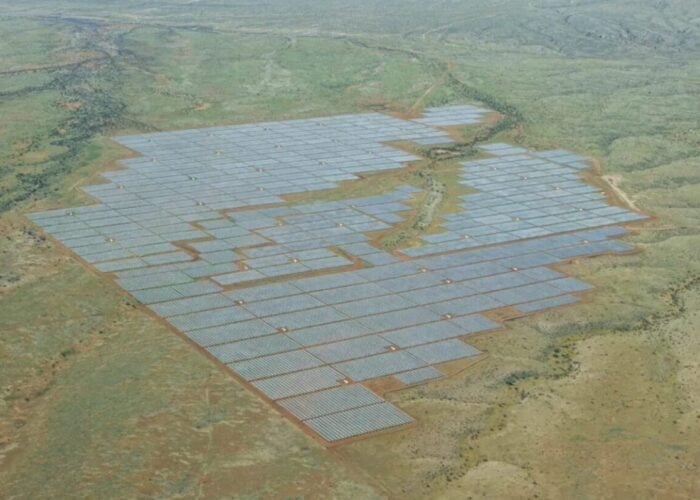Grid parity for solar at household level may already have been reached, an advocacy group for renewable energy in Japan has said. At the same time, the first nuclear reactor to be fired up in Japan since the Fukushima crisis went online on Tuesday.
Japan’s nuclear power stations, more than 50 in total, have been shuttered since the Great East Japan Earthquake and tsunami caused breaches at the Fukushima Daiichi reactor, a few hundred miles north-east of Tokyo.
Unlock unlimited access for 12 whole months of distinctive global analysis
Photovoltaics International is now included.
- Regular insight and analysis of the industry’s biggest developments
- In-depth interviews with the industry’s leading figures
- Unlimited digital access to the PV Tech Power journal catalogue
- Unlimited digital access to the Photovoltaics International journal catalogue
- Access to more than 1,000 technical papers
- Discounts on Solar Media’s portfolio of events, in-person and virtual
Sendai Nuclear Power Unit No1, on the southern island of Kyushu, is widely expected to be the first reactor to come back into service and has been undergoing inspections. The reactor started up at 10:30am on Tuesday local time after control rods were extracted and will go into full operation on 14 August.
“We see this start-up as one of the important steps on restart process of the nuclear reactor,” the local utility, Kyushu Electric, said in a statement on Tuesday attributed to company president Michiaki Uriu.
“We have resolved never to allow an accident such as that which occurred at Fukushima Daiichi Nuclear Power Station. To be worthy of peace of mind of all our stakeholder [sic], we will promote initiatives for improving the safety and security of nuclear power with voluntary and ongoing measures, and make an effort of [sic] positive disclosure and communication activities.”
The news comes just days after the Japan Renewable Energy Foundation (JREF)’s senior researcher Keiji Kimura wrote in a blog that Japan may have attained grid parity for PV near the end of last year.
According to Kimura, government assessments of energy prices that were carried out in May this year estimated solar PV power to cost 29.4 per kWh. By comparison, the government-appointed Working Group said that price was more than twice as expensive as LNG-based thermal generation, which costs 13.7 per kWh.
However, Kimura wrote, these prices do not take into account the costs of transmission and distribution through power grids. These costs occur separately, but are nonetheless added onto consumer energy bills. Effectively, as other regions such as California and New York have been assessing and incorporating into their electricity markets.
PV electricity generated and self-consumed onsite by the system owner, perhaps using batteries or heat storage, would not therefore be subjected to these grid-related costs. What should also be taken into account, according to Kimura, is the rapid and continuing fall in costs for PV systems. There was also some cautious conservatism in Kimura’s calculations, given that it used average electricity prices and did not consider that prices for nuclear might rise due to more stringent safety measures, or that fossil fuel prices might continue to fluctuate if not rise long term.
“In assessing the economic efficiency of a residential solar PV system, any comparison of the unit cost of power generation with other energy sources is meaningless for a person who is installing such a system, but comparison by electricity rate for households is more practical,” Kimura wrote.
“Those installing residential solar PV systems will be better off if the cost incurred by installing them is cheaper than the electricity rate they have to pay when they purchase electricity from utilities.”
While JREF had to work with estimates based on average pricing, Kimura said “we can assume with high probability that the cost of residential solar PV has become cheaper than the electricity rate in the latter half of 2014”.
Controversial decision
It is ironic that Kyushu, site of the returning nuclear reactor this week, enjoys high levels of solar irradiance and has been considered a good location for solar PV projects. However Kyushu Electric Power was the first of a number of electric utilities to halt considering applications for new PV projects last September, citing concerns that it would not be able to accommodate them on its networks. In Japan, electric utilities are also responsible for transmission and distribution in their respective regional service areas.
That issue was resolved following a long and protracted saga. Various measures were introduced including giving electric utilities the right to remotely curtail output of renewable energy facilities while government-appointed working groups calculated, based on figures provided by the utilities, how much capacity was available for renewables in the affected regions. Meanwhile, further cuts to renewable energy support were announced.
However, questions were asked, including concerns raised by energy industry figures who wished to remain anonymous, that the calculations accommodated the full return of Japan’s nuclear fleet, giving rise to fears that the nuclear restart was being considered inevitable despite public uncertainty.
Nuclear power is obviously an emotional topic in Japan, which has only just marked the 70th anniversary of the atomic bombs which fell on Hiroshima and Nagasaki. Popular protest movements, which are uncommon in Japan, have arisen and previously Japan Renewable Energy Foundation (JREF) has told PV Tech that support for renewables remains high among the public by comparison to nuclear.
There have been intimations previously that lobbying groups for heavy industry have unduly influenced government policy in this regard.
Japan is tentatively scheduled to begin a process of deregulating its electricity markets next year. Through this process, transmission and distribution (T&D) would be “unbundled” from electricity sales, breaking the monopoly the regional utilities could hold. It remains to be seen how effectively T&D could be unbundled from a nuclear power plant.






